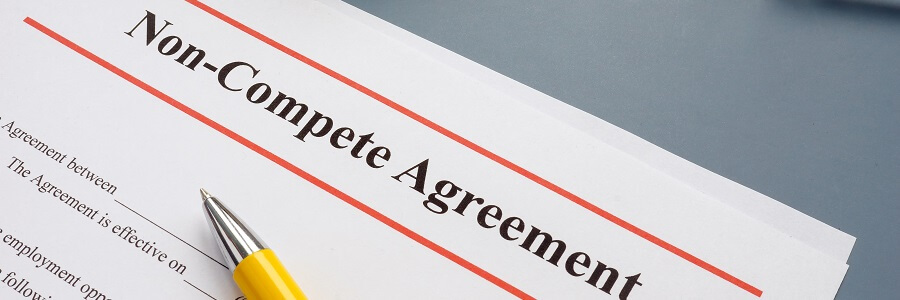The DEI Difference: Why SMBs That Embrace DEI Perform Better

Quick look: The importance of diversity, equity, and inclusion (DEI) in the workplace is becoming increasingly apparent. Companies that prioritize DEI are not only acting ethically, but they’re also more likely to succeed. This is particularly true for small- and medium-sized businesses (SMBs), as SMBs that embrace DEI have been shown to have higher levels of innovation, better decision-making, and a more engaged and committed workforce.
In today’s business landscape, small- and medium-sized businesses (SMBs) that prioritize diversity, equity, and inclusion (DEI) are more likely to thrive and succeed. While DEI initiatives have been around for decades, recent events have brought them to the forefront of corporate consciousness. However, the benefits of embracing DEI go beyond simply doing what is right. Studies have shown that SMBs with a DEI strategy tend to perform better than those without.
Here we explore why every company should prioritize DEI as part of their business strategy and how an HR partner can help develop impactful programs and initiatives.
DEI matters
Over the past few decades, there has been a growing awareness of the importance of diversity, equity, and inclusion (DEI) in the workplace. Historically, many workplaces have been dominated by a narrow range of perspectives and experiences, with underrepresented groups facing barriers to entry and advancement. But as the workforce becomes more diverse, SMBs are realizing that creating a more inclusive and equitable environment not only demonstrates positive ethics and morals, but also directly impacts their bottom lines.
Most recently, the Biden administration stood as an example to all businesses by taking a step in February of 2023 to issue an executive order mandating government agencies build and create “equity teams”.
SHRM described the executive order, stating its significance by how it fosters greater collaboration and accountability, and streamlines agencies’ reporting of progress and planning to advance equality by:
- Empowering Federal equity leaders
- Strengthening community partnerships and engagement
- Investing in underserved communities
- Addressing emerging civil risks
- Promoting data equity and transparency
- And more
That’s because diversity and inclusion benefit all parties involved. Where diversity brings people of all different walks of life, such as race, culture, religion, age, gender, sexual orientation and identities, and class together, inclusion creates an environment where people feel valued and respected and have a sense of safety to express what they think, bringing their authentic self to the workplace.
What does diversity in the workplace look like?
There’s no exact breakdown or cookie-cutter approach to what a diverse workforce should look like, but there are key principles that make a workforce diverse:
- Representation: To have a diverse workforce, it is important to have representation from different groups. This means recruiting and retaining employees from a variety of backgrounds, including different races, ethnicities, genders, ages, religions, sexual orientations, and abilities.
- Inclusion: Having a diverse workforce is not enough if employees don’t feel valued and included. SMBs need to create an inclusive culture where everyone feels welcome and supported.
- Equity: Means creating fair and just systems and policies that account for diverse employees’ different needs and experiences, including ensuring all employees have equal opportunities to succeed and are not held back by biases or discrimination.
- Empowerment: Diverse employees need to be empowered to contribute their unique perspectives and ideas. SMBs need to give employees the support, resources, and opportunities they need to succeed, including access to mentorship, training, and development programs.
- Accountability: Companies must hold themselves accountable for creating DEI in the workplace. It’s crucial to track and report on diversity metrics, regularly assess the effectiveness of DEI initiatives, and take action to address any gaps or areas of improvement.
5 reasons why diversity helps SMBs perform better
Companies with a DEI strategy tend to perform better because they benefit from diverse perspectives, experiences, and ideas. Consider these statistics:
- Diverse companies see 2.5 times higher cash flow per employee
- Diverse management has been shown to increase revenue by 19%
- Gender-diverse companies are 15% more likely to surpass industry median financial returns
By creating a more inclusive and equitable workplace culture, SMBs can unlock the full potential of their employees and drive business success. Here are five key reasons why.
1. DEI attracts and retains top candidates
Embracing DEI can help companies attract and retain top talent, particularly from underrepresented groups. And studies show that people want to work in a diverse environment. Glassdoor surveyed and found that 3 in 4 (76%) job seekers report that a diverse workforce is an important factor when evaluating companies and offers.
Today’s employees understand the importance of diversity in the workplace and will be more inclined to apply for a company that reflects their values and where they have a better chance of being accepted and included. This can also lead to lower turnover rates, which can save time and resources in recruiting efforts.
Additionally, SMBs known for their commitment to DEI have a better employer brand and are often viewed more favorably by job seekers, making it easier to attract top talent.
2. Encourages more innovation
It’s nearly impossible for one person to come up with a solution to every problem. With a diverse team, challenges can be looked at from multiple directions and perspectives. When more minds from various backgrounds feel comfortable expressing their thoughts, they are more willing to share their ideas.
It has also been found that diverse teams make better decisions and inspire more innovation. Thinking outside the normal “this is how we always do things” mindset can lead to developing more creative and effective products and services.
3. Promotes employee engagement
When employees feel included and valued for their unique perspectives and experiences, they are likelier to feel a sense of belonging in the workplace. This can result in a more engaged and committed workforce, which can positively impact productivity and profitability, as employees are more likely to be committed to the organization’s success.
Further, a Boston Consulting Group survey found that 81% of workers who stated their workplace was inclusive also felt happier in their jobs. Happy employees perform better, are more likely to be engaged in their work, and have higher levels of job satisfaction. Additionally, happy employees are less likely to experience burnout or turnover, which can result in cost savings and increased organizational effectiveness.
4. Creates improved customer service
Employees who come from different backgrounds and experiences are more likely to have empathy and insight into the unique needs of various customer groups. Additionally, a diverse workforce can provide better service by tailoring interactions to meet the needs of individual customers. Employees who understand and respect cultural practices and communication styles can build stronger relationships with customers and provide more effective solutions to their problems.
5. Better decision-making and problem-solving
A diverse workforce brings a range of perspectives and experiences to the table and often leads to more creative and innovative solutions to problems. When teams are too homogenous, groupthink can occur, which may result in a lack of different viewpoints and ideas. DEI can also help reduce bias in decision-making. When employees are aware of their biases and are encouraged to consider multiple perspectives, they are more likely to make objective and equitable decisions.
Tips to become more diversified
What many organizations get wrong about diversity is that DEI is not a one-time initiative, nor is it only about gender, race, and age. Diversifying your workforce requires a proactive and intentional approach. Here are some tips for evaluating your current practices.
Review your recruiting: Take a critical look at your recruiting strategy to ensure its inclusive and equitable. This may include creating job descriptions free of bias, advertising job openings in diverse communities, and using diverse interview panels. Also consider using blind resume screening to reduce the risk of unconscious bias in the hiring process, which includes removing personal information such as name, gender, and age from resumes to ensure that candidates are evaluated based on their qualifications and experience.
Build relationships with diverse communities: Build relationships with diverse communities to help you tap into a wider pool of candidates. Attend events and conferences focused on diversity, partner with local organizations, and create outreach programs to connect with underrepresented groups.
Offer benefits that appeal to a diverse workforce: A diverse employee base brings in people from all walks of life, and in turn, these people have different needs that every SMB should be aware of and respectfully address. Implementing health benefits, perks, and policies that cater to your specific workplace can go a long way in creating a more inclusive culture.
These benefits could include telehealth options to increase accessibility, mental health services, student loan repayment plans, HSA and FSA plans, coverage for chronic disease and care management, and disability-specific services like speech therapy, physical therapy, hearing aids, and more.
Implement mentorship and development programs: Mentorship and leadership programs can help support the growth and development of underrepresented employees. This can help build a pipeline of diverse talent for leadership positions in the future.
Monitor efforts regularly: Regular monitoring allows small businesses to measure their progress toward their diversity goals, identify areas of success, and areas that need improvement, which can inform future diversity initiatives. It can also help SMBs identify potential barriers to diversity, such as biases in hiring practices or lack of access to certain groups.
Consistency is key
Getting started on any DEI effort can be difficult, but a PEO like ExtensisHR has experienced professionals who can guide SMBs in the right direction. ExtensisHR helps its customers with their DEI in many ways:
- Full-cycle recruiting services at no additional cost to help find diverse talent
- Training and development programs to overcome unconscious bias
- Creation of mentorship programs to promote employee growth
- Compliance with DEI regulations, anti-discrimination laws, and all relevant guidelines
- HR policy and procedure development to identify and remove any potential bias
- Benchmarking and reporting to compare DEI against industry standards and report on progress towards their diversity goals, helping SMBs identify areas of strength and areas that need improvement to inform future diversity initiatives
Additionally, ExtensisHR’s DEI Dashboard helps business leaders identify their workforce’s demographics and plan accordingly. It features real-time data on pay equity, salary trends across gender and race demographics, employee turnover, promotions, and more.
By creating a more inclusive and equitable workplace culture, SMBs can unlock the full potential of their workforce and improve their bottom line. Contact the experts at ExtensisHR to get started.



